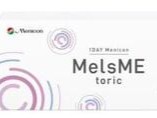jsc 秋研究会にて、小宮宇子先生を講師に迎えた『チタンの発色を楽しむ』と題した研究会が開催された。
本研究会は、宝飾関係者を対象に、チタン素材の表面に形成される酸化膜と、それに伴う発色のメカニズムについて理解を深めることが目的。
チタンは、表面に形成される酸化膜の厚みによって光の反射が変化し、様々な色を呈する。 この特性を利用することで、青、紫、黄色、ピンクなど、多様な色彩表現が可能となる。 小宮先生は、このチタンの特性を活かし、アクセサリー製作を行っている。
チタンの発色のメカニズムは、電圧を調整することで酸化膜の厚みを制御し、狙った色を作り出すというものである。 低電圧では青みがかった色となり、電圧を上げるにつれて紫、黄色、ピンク、ゴールドといった明るい色合いが出現する。
研究会では、電解処理による酸化膜生成の実演が行われた。 チタンを専用の溶液に浸し、電圧をかけることで膜の厚みを均一に調整する技術が紹介された。 例えば、20ボルト程度の低電圧では青色の膜が生成され、40ボルトを超えると紫やピンクの色合いが出せる。 色の明度や鮮やかさも電圧の微調整によって制御可能だが、わずかな電圧変化が仕上がりに大きく影響するため、非常に繊細な作業が求められる。
さらに、テープを用いたマスキングによる意図的な模様付けの方法も紹介された。
チタンの発色は、塗装とは異なり素材そのものの表面で色が生まれるため、摩耗に強く、美しい色合いが長く維持できるという利点がある。 また、酸化膜は人体に無害であるため、ピアスや指輪などのアクセサリーにも安全に使用できる。
今回の研究会では、バーナーによる発色も可能であるとの説明があり、手軽に発色を試せる方法も紹介された。 参加者は、自身では準備が難しい機器を用いた体験を通して、チタンの発色について楽しく学ぶことができた。
Report on “Enjoying Titanium Coloration” at the jsc Autumn Workshop
The Diverse Coloration Mechanisms of Titanium and Their Applications
The jsc Autumn Workshop was held with a focus on “Enjoying Titanium Coloration,” led by instructor Komiya Uko. The objective of this workshop, intended for jewelry professionals, was to deepen understanding of the oxide film formed on the surface of titanium materials and the resulting coloration mechanisms.
Titanium exhibits various colors due to changes in light reflection depending on the thickness of the oxide film formed on its surface. By utilizing this characteristic, it becomes possible to express diverse colors such as blue, purple, yellow, and pink. Ms. Komiya utilizes these properties of titanium in her jewelry creation.
The mechanism of titanium coloration involves controlling the thickness of the oxide film by adjusting the voltage to produce the desired color. At low voltage, a bluish color appears, and as the voltage is increased, brighter hues such as purple, yellow, pink, and gold emerge.
A demonstration of oxide film formation through electrolysis was conducted at the workshop. A technique for uniformly adjusting the film thickness by immersing titanium in a dedicated solution and applying voltage was presented. For instance, a blue film is generated at a low voltage of around 20 volts, while shades of purple and pink can be achieved when exceeding 40 volts. The brightness and vividness of the color can also be controlled through fine voltage adjustments, however, it requires extremely delicate work as even slight voltage changes significantly affect the finished product.
Furthermore, methods of creating intentional patterns by masking with tape were also introduced.
Titanium coloration, unlike painting, involves color generation on the surface of the material itself, thus offering advantages such as high wear resistance and long-lasting beautiful hues. Additionally, the oxide film is harmless to the human body, making it safe for use in accessories like earrings and rings.
The workshop also included an explanation of titanium coloration using a burner, showcasing easily accessible methods for experimenting with coloration. Participants enjoyed learning about titanium coloration through hands-on experiences using equipment that would be difficult to prepare individually.






